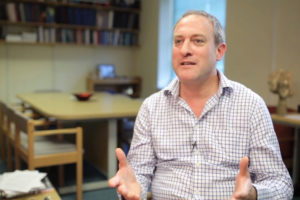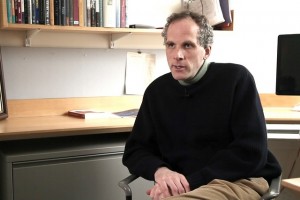Squares versus circles: Why seahorses opt to be sq...
Scientists used 3D-printing technology to investigate the possible reasons why seahorse's tail evolved into it...
What is the great plate count anomaly and how was it accounted for by modern microbiology? What is a dialysis bag and what is it’s function? University Distinguished Professor of Biology at Northeastern University, Director of Antimicrobial Discovery Center Kim Lewis speaks on the various secondary conditions that are key to growth of bacterial populations.
To the great astonishment of early microbiologists it turned out the majority of bacteria do not grow in the lab at all. So the typical experiment to show that is you take a sample of soil or marine sediment, you can dilute it, take a droplet and put that droplet under the microscope and count the number of bacterial cells. Then you take the same droplet, put it on a Petri dish, wait for colonies to grow and count the number of colonies. The difference between the cell count and the colony count is known as the great plate count anomaly. The differences that you get about 1% of cells that you counted under the microscope to form colonies on the Petri dish. And that puzzle existed for about 100 years.
If the idea is correct, then we can take a heavy inoculum, put it on a Petri dish and let lots and lots of colonies grow. And of course we assumed that many or most of them would be regular culturable species. But if it so happened that by accident one of the culturable species was close to a cell which is uncultured and donates a growth factor to it, then that uncultured organism should also form a colony on that crowded Petri dish. And now we can take isolated colonies pairwise one by one and streak them together on a separate Petri dish, cross-streak them. And from that cross-streak we immediately observed is that one organism would grow whatever we streaked it and the other one would grow only close to the other one, so it was clearly dependent on the other organism, it did not grow far away from it on the Petri dish.
Another very important aspect of uncultured organisms is the fact that our symbionts are primarily uncultured. So in the last, I would say, five years there’s been an explosion in the studies of what is now known as the microbiome, the collection of all microorganisms that live in people, primarily in the gut. There are more cells of bacteria in our gut than human cells in the human body. So in a way we’re a kind of a chimeric organism, if you will, or super-organism. Very many of those species are symbionts do very useful things for us, help us digest certain things, help us keep down inflammation, keep pathogens at bay, affect almost each and every function of the human body.

Scientists used 3D-printing technology to investigate the possible reasons why seahorse's tail evolved into it...

Neuroscientist Neil Burgess on the difference between short-term and long-term memory, phonological loop, and ...

Harvard Medical School Prof. David Jones on personalized medicine, patients’ lifestyle, and genetic factors of...